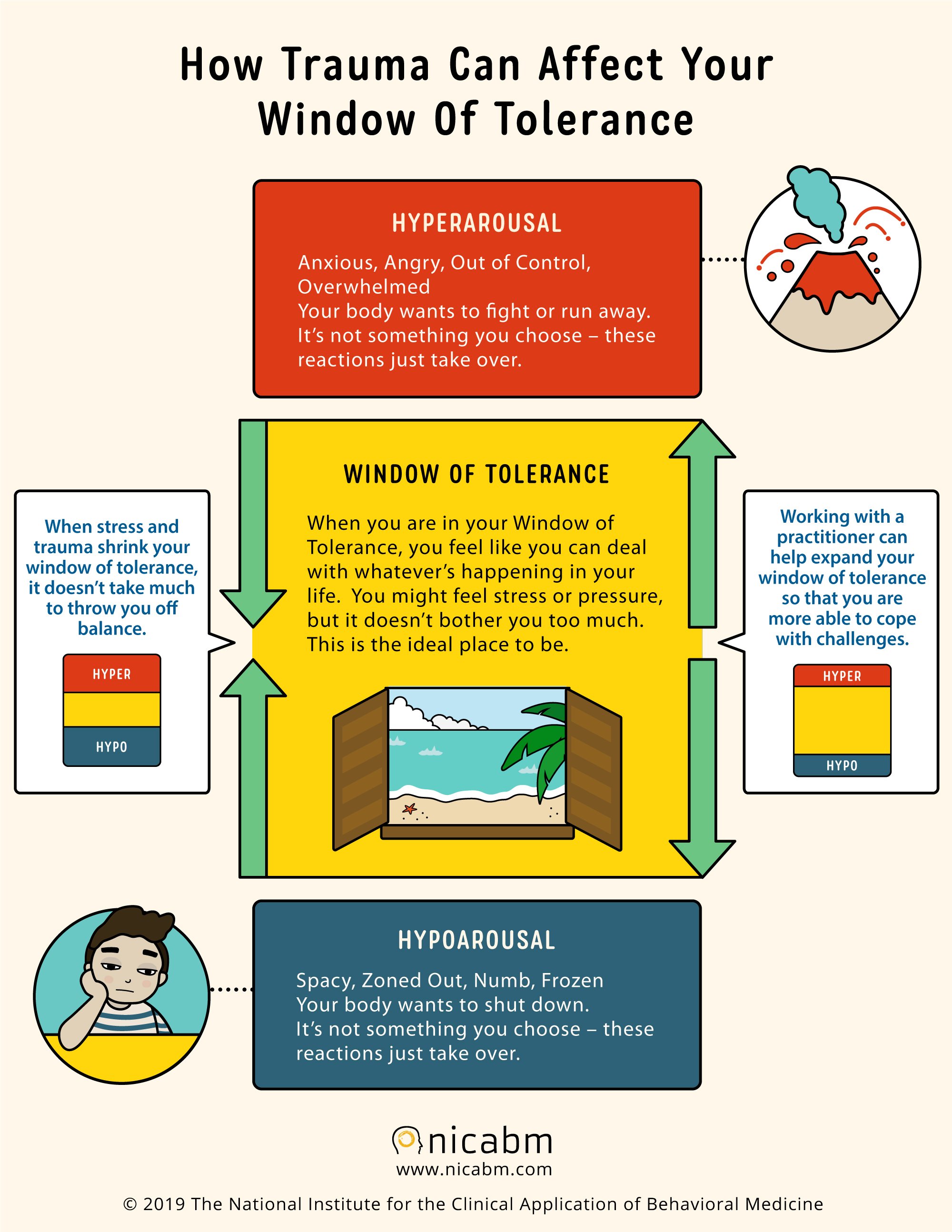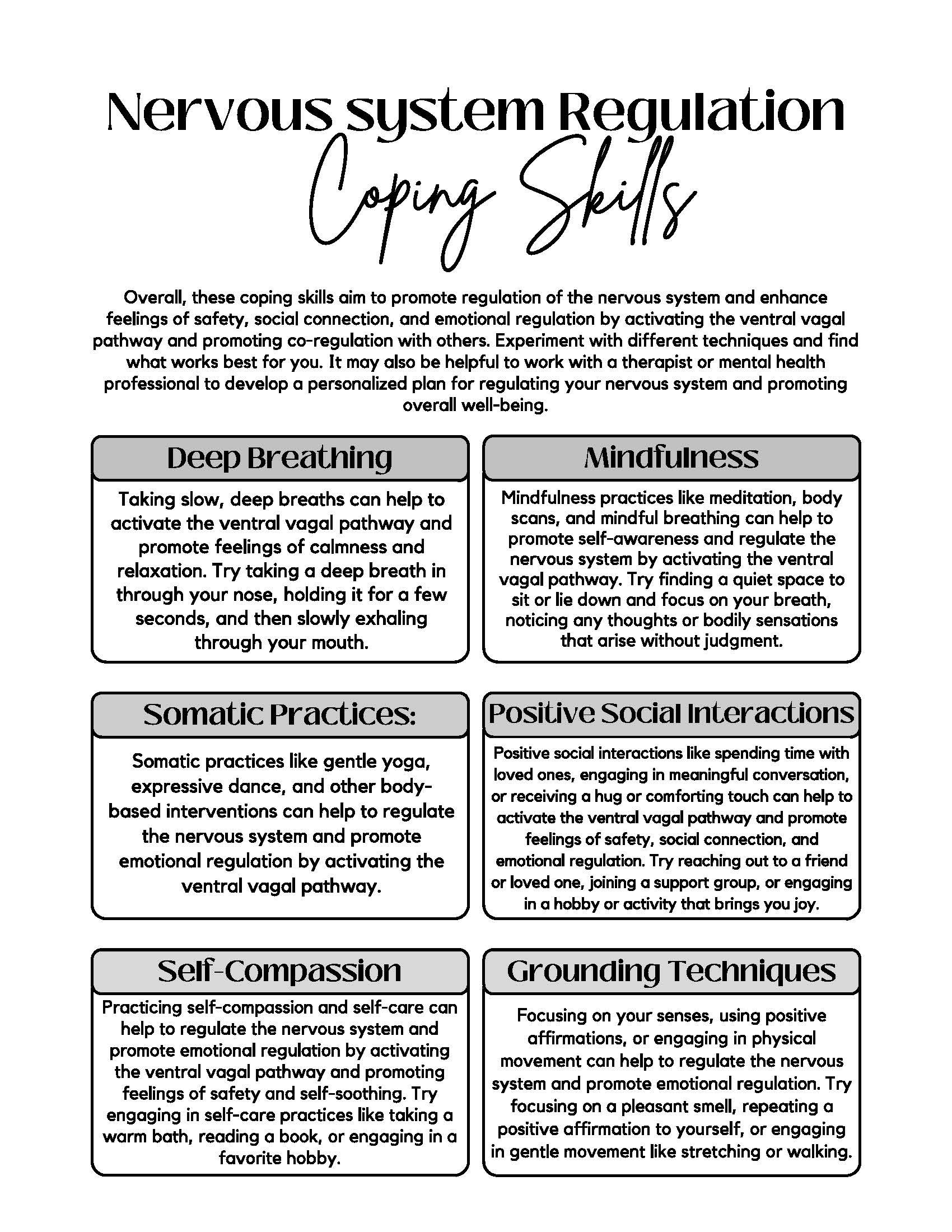How Understanding Your Window of Tolerance Can Improve Your Mental Health
The Window of Tolerance Blog Series -Part 1 of 3
Welcome to the 1st post in this three-part series on the window of tolerance! I’ll introduce you to what it is, why it’s so important for your emotional well-being, and what happens when you step outside of it into states like hyperarousal or hypoarousal. In the next posts, I’ll dive deeper into these states and explore more targeted strategies to help you return to a more grounded and regulated state, so you can respond to stress and life’s challenges in a calm and capable way.
What Is the Window of Tolerance?
Have you ever felt so overwhelmed that even the smallest task sends you into a spiral? Or maybe you’ve had moments where you feel emotionally numb, disconnected, or just “not there.” These experiences can often be explained by something called the Window of Tolerance—a simple but powerful concept that can help you understand how your nervous system responds to stress.
Let’s break it down and explore why it matters—and how therapy can help you find more stability, presence, and ease.
The Window of Tolerance is the zone where you can manage and respond to life’s challenges without becoming overwhelmed or shutting down. Within this window, your nervous system feels safe enough to stay present—you can think clearly, feel your emotions, and respond flexibly.
But when you’re outside your window, your nervous system kicks into survival mode. This can look like either hyperarousal or hypoarousal:
Hyperarousal (fight/flight): You might feel anxious, restless, panicky, angry, overwhelmed, or easily triggered.
Hypoarousal (freeze/shutdown): You may feel numb, zoned out, disconnected, foggy, tired, or like you’re watching life from a distance.
These aren’t choices—they’re automatic nervous system responses designed to keep you safe. But when you live outside your window too often, it can start to affect your relationships, work, health, and overall well-being.
Different Zones of Arousal
What Affects Your Window of Tolerance?
Many factors can shape your window of tolerance:
Early childhood experiences: If you didn’t feel consistently safe or emotionally supported growing up, your nervous system may have learned to stay on high alert or shut down to protect you.
Trauma: If you are experiencing emotional abuse, like attacks on your self worth by a partner, this can keep your nervous system on high alert, making it hard to stay calm. This shrinks your window of tolerance, so even small stressors may trigger intense emotional reactions, leaving you overwhelmed and unable to cope effectively.
Mental health challenges like anxiety and depression can make it harder to stay regulated. Anxiety may keep your system stuck in a hypervigilant, on-edge state, while depression can pull you into shutdown, fatigue, or disconnection.
Neurodivergence (e.g., ADHD or autism): You might experience heightened sensitivity to sensory input, social cues, or emotional shifts, which can make it harder to stay regulated.
Chronic stress, poor sleep, burnout, or health issues can all temporarily shrink your window, leaving you in a state of heightened physical tension or overwhelm or exhaustion.
How Therapy Can Help Widen Your Window of Tolerance
Part of healing is learning how to gently expand that window, so you have more space to feel, process, and respond without becoming overwhelmed or shutting down.
As a therapist trained in mind-body approaches, I can help you:
Develop awareness of what state you’re in
Learn grounding and regulation tools that work for your nervous system
Explore the roots of why your window narrowed (often trauma or chronic dysregulation)
Build inner safety and trust with your emotions and body
Use approaches like EMDR, IFS, DBT, mindfulness, somatic therapy, and polyvagal-informed tools to support nervous system healing
Nervous System regulation for the window of tolerance
Here are a few simple nervous system regulation skills that can enhance feelings of safety, connection, and emotional regulation that can calm the nervous system, and so widen the window of tolerance.
Over time, you can move from reacting to responding—and that changes everything.
When you expand your window of tolerance, it unlocks the ability to do it all—heal from trauma, handle stress, build strong relationships, and reach your goals. This is the key to emotional well-being, and I can help you strengthen it. Reach out today to begin.
What’s Next
This post was 1 of 3 in our series on the window of tolerance. in the next post, 2 of 3, we’ll dive deeper into understanding and exploring practical strategies for managing hyperarousal and staying within your window of tolerance.
Visual Resources and Tools
If you're a visual learner, here are some helpful diagrams and resources you can explore:
The Window of Tolerance graphic by NICABM – This clear and simple overview illustrates how trauma impacts your window of tolerance.
Window of Tolerance Awareness Sheet - https://static1.squarespace.com/static/5cb61b1e29f2cc34d16e2bd6/t/6022eb25fe4dd05c4259b556/1612901175810/window-of-tolerance-awareness-worksheet.pdf
Stuck Not Broken by Justin Sunseri – This podcast offers visuals, explanations, and discussions about polyvagal theory in plain language.
References
Ogden, Pat. 2012. Level I: Training in Affect Dysregulation, Survival Defenses, and Traumatic Memory. Bolder, CO: Sensorimotor Psychotherapy Institute.
Ogden, Pat, Kekuni Minton, and Clare Pain. 2006. Trauma and the body: A sensorimotor approach to psychotherapy. New York: W. W. Norton & Co.
Siegel, Daniel J. 2012. The Developing Mind: How Relationships and the Brain Interact to Shape Who We Are. Second ed. New York: The Guilford Press.
National Institute for the Clinical Application of Behavioral Medicine. "How to Help Your Clients Understand Their Window of Tolerance." NICABM, www.nicabm.com/trauma-how-to-help-your-clients-understand-their-window-of-tolerance/. Accessed 1 June 2025.

